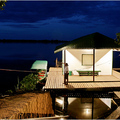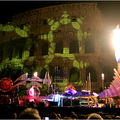MENTION Oporto, and one tends to think of well-fed British gents puffing postprandial cigars as they sip garnet-colored wine and solve the world's problems before rejoining the ladies in the drawing room. But what that word — the name of Portugal's second-largest city — ought to conjure is an almost impossibly picturesque town of Gothic, Renaissance and Baroque buildings cascading down a steep gorge to the banks of the Douro River just before its waters reach the blue Atlantic.
Six stunning bridges — including two designed by Gustave Eiffel and one of his students, and each a marvel of engineering — loom hundreds of feet above. No wonder Unesco declared the whole city center a World Heritage Site in 1996.
Thanks to the likes of Evelyn Waugh and P. G. Wodehouse, however, Oporto has been overshadowed by its principal export, port wine. Wines have been traveling downriver from the Douro Valley almost since the Romans founded the town of Portus Cale. A millennium later, the English developed such a taste for the stuff that they bought up most of the wineries — hence names like Graham's and Sandeman — and, after expelling Napoleon's army, had to be evicted from the city themselves.
But sweet wine does not a modern city make, and Oporto has been keeping itself busy of late. There are the new concert hall by Rem Koolhaas, an outstanding contemporary art museum and a thriving gallery scene, not to mention a whole riverfront of lively bars and restaurants.
Things are even changing in the fabled vineyards upriver as younger generations of winegrowers update their staid family businesses with an emphasis on lighter varietal wines that want to be uncorked today rather than in 40 years. The traditional flat-bottomed rabelo sailboats that once brought the wine casks downriver continue to ply the waters, though now they haul tourists who come to bask in the city's glow of intensely saturated colors and crystal-clear light, which can be just as intoxicating as any vintage port.
Assuming you've got a good pair of walking shoes in which to trek up and down the steep hills of the historic center, most of Oporto's major monuments can be reached on foot. Presiding over the whole scene is the Sé Catedral, with its Gothic cloister and gorgeous 18th-century tiles, which dates back to the 12th century. Next door is the Bishop's Palace, a white grand Baroque facade punctuated by gray curlicue stone window frames. It almost takes precedence over the church itself.
Before taking the inland route down the hill, step out onto the upper level — now used for pedestrians and the city's metro — of the Dom Luis I Bridge, built by one of Eiffel's disciples, to get a bird's-eye view back to the hilltop medieval city and the remnants of its 14th-century fortifications.
The streets that fan out behind the cathedral are home to many of its best-known shops, including the Lello Bookstore, in a marvelous neo-Gothic building. Brace yourself with a coffee at the grand Art Nouveau Café Majestic before tackling the 225 steps of the Torre dos Clérigos for yet another breathtaking view of the city and river.
Also not to be missed is the vestibule of the São Bento train station, a monument to the Portuguese love affair with painted tiles (there are 20,000 of them there). Farther downhill is the Igreja de São Francisco, in which someone appears to have detonated an explosion of carved and gilt Baroque ornament inside a decidedly more austere — but no less impressive — 14th-century Gothic church.
After expanding into new neighborhoods for much of the last century, Oporto is in the midst of recolonizing its most romantic neighborhood, the Ribeira, as the arcaded warren of former bacalhau warehouses along the river is known. Near the Casa do Infante, the former home of Portugal's favorite son — the 15th-century maritime explorer Henry the Navigator — and now a museum of city history, you'll find a cluster of clothing stores like Favela Chic and Shade, selling pan-European hipster wear to Oporto's modern progeny.
Stretching in both directions from the Praça da Ribeira, the rows of weathered tile-clad buildings almost appear to be holding each other up. Above the omnipresent laundry drying on the balconies, women in floral housedresses lean over the railings and watch city life stroll, sail, cycle or just drift by. Down at street level, stylish interior design shops line up next to Internet cafes and intimate wine bars.
At Presuntisco, diners are greeted by robust garlic bread, tartly marinated green olives and roasted dates wrapped in cured ham. There, you can tuck into a lunch of tangy goat cheese topped with sultanas and toasted nuts; caldo verde, the traditional Portuguese cabbage soup; and a plate of alheira de Caça, a garlicky sausage of game served over rice. Wash it all down with a bottle of crisply refreshing vinho verde, the young white wine with just a hint of effervescence.
Across the river, along the waterfront in Vila Nova da Gaia, the rows of old port warehouses offer tastings of their traditional wines, with Ramos Pinto offering one of the most evocative experiences. The wharf ends in a cluster of lively restaurants and bars with names like Afrodisíaco, Vinotinto and Real India, underscoring the city's embrace of things modern and international.
A more bohemian scene can be found back at Maus Hábitos, the current clubhouse for Oporto's chilled-out youth culture. On the fourth floor of a nondescript office building behind the cathedral, it is a popular vegetarian restaurant by day and a sort of updated 1960s happening at night. A few people there sell handicrafts and homemade cakes and even give massages, but for those who really need to unwind, there are some very stiff cocktails, and a D.J. spins excellent '80s and '90s house music.
For a real taste of Oporto present, book a table for dinner at Foz Velha in the chic Foz do Douro neighborhood overlooking the crashing waves of the Atlantic. Plan to spend the evening strolling the neighborhood's eclectic shops — sunglass stores, interior design studios and trendy boutiques like Clube Chocolate — many of which stay open until about midnight.
Another reason to venture out into the new city is the Serralves Museum of Contemporary Art by the Pritzker Prize-winning Portuguese architect Álvaro Siza Vieira. It plays host to exhibitions of cutting-edge international contemporary art, and the museum shop stocks some of the best of Portuguese design, like the boldly architectonic silverware of Ana Fernandes.
But the city's newest architectural gem is the even more recent Casa da Música, which opened in 2005 with a Lou Reed concert. Mr. Koolhaas's design looks like a faceted meteorite that slammed into an otherwise tranquil neighborhood of broad boulevards. At the top-floor restaurant Kool, the Italian chef Augusto Gemelli makes culinary waves with his original takes on authentic Italian fare, like rigatoni in a tomato sauce tempered with the sweetness of grapes.
However multifaceted Oporto has become, it hasn't forgotten its vinicultural roots. The Alto Douro wine region is itself a Unesco World Heritage Site, and 2006 marked its 250th anniversary as a demarcated wine region, making it the oldest designated wine region in the world. A trip upriver — be it by boat, car or helicopter — reveals a landscape of steep hills terraced into vineyards and dotted with centuries-old quintas, as the wineries are called, most of which are open to the public.
At the historic Quinta da Pacheca all grapes are pressed by foot in old granite tanks, and visitors are invited to join in during the harvest in September and October.
The nearby Hotel Vintage House, with its sweeping views of the river and terraced hillsides, is worth checking out for lunch, or better yet checking in overnight. Bookings for harvest time should be made well in advance, though. The hotel director, Paulo Teixeira de Carvalho, said: “That is when everyone wants to come. The whole valley is one huge party.”
VISITOR INFORMATION
HOW TO GET THERE
Tap Air Portugal (www.flytap.com/USA) has flights from Newark. In late April, round trips began at $623.
A three-day Porto Card (15.50 euros, about $21 at $1.36 to the euro) offers free rides on some buses and free entry to some attractions. Available at tourism offices and hotels.
WHERE TO STAY
Pestana Porto Hotel (Praça da Ribeira 1; 351-22-340-2300; www.pestana.com) has 48 rooms in an updated clubby décor and a lively lobby scene in the Ribeira's main square. Doubles from 151 euros.
Vintage House (Lugar da Ponte, Pinhão; 351-25-473-0230; www.hotelvintagehouse.com) is a Relais & Chateau classic with 43 spacious rooms, all with river views in wine country. It also offers cooking classes and a wine academy. Doubles from 186 euros May into October.
WHERE TO EAT
Foz Velha (Esplanada do Castelo 141; 351-22-615-4178; www.fozvelha.com) fills the rooms of a grand former apartment painted deep shades of scarlet and cornflower blue. The five-course tasting menu is 38.50 euros without wine.
Kool (Casa da Música; 351-22-609-2876), a luxurious sky-lit loft, offers updated Italian fare, like a salad of perfectly roasted vegetables topped with scrambled egg, rolitos of bresaola filled with a subtle cheese mousse, and signature pastas. Dinner for two with wine, 70 euros.
Presuntisco (Cais da Ribeira 9; 351-22-203-8457) features regional dishes, heavy on pork, in an intimate vaulted stone cellar or at outdoor tables overlooking the river. Dinner for two with wine, 60 euros.
WHAT TO DO
Casa da Música (Avenida da Boavista 604-610; 351-22-012-0200; www.casadamusica.pt) has a grand auditorium and smaller spaces for everything from classical to rock to fado.
At Maus Hábitos (Rua Passos Manuel 178; 351-22-208-7268) drinks are less the 5 euros.
Serralves Museum of Contemporary Art (Rua D. João de Castro 210; 351-22-615-6500; www.serralves.pt) charges 5 euros admission.
Quinta da Pacheca (Lamego; 351-25-431-3228) is liveliest in fall, with grape crushings and tastings.
Ramos Pinto (Avenida Ramos Pinto 400, Vila da Gaia; 351-22-377-5011; www.ramospinto.pt) has tastings for 2 euros.





